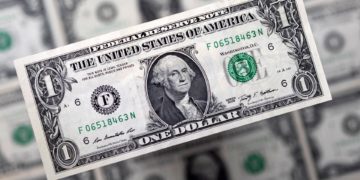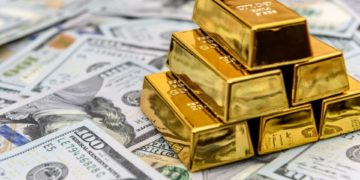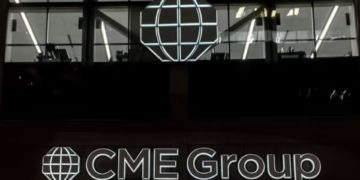The dollar index, which tracks the US currency against six others and has a large euro weighting, rose 1.2 per cent to a fresh 20-year high. That ascent helped to push the euro closer to parity with the greenback, with Europe’s common currency dropping as much as 1.5 per cent to $1.0032 — approaching a level not seen for nearly two decades

With recent drops in crude prices and industrial metals like copper and aluminum tumbling, many are looking to commodities for a better glimpse of the macroeconomic picture.
Commodity prices have slid this year amid rising interest rates, with the Invesco DB Base Metals Fund (DBB) dipping to a 52-week low on Tuesday.

The Japanese yen also fell to a fresh 24-year low against the dollar of ¥137.75 before strengthening slightly.
Market sentiment in recent weeks has swung between the recognition that central banks need to raise interest rates aggressively to combat soaring inflation and a concern that excessive monetary tightening may cause a global economic slowdown.
Both narratives have firmed investors’ bullishness towards the dollar, particularly because recession risks are perceived to be higher in Europe. The European Central Bank has followed the US Federal Reserve into tightening monetary policy, but is expected to remain as dovish as possible to counter economic shocks from Russia’s invasion of Ukraine.
“We’re expecting a recession earlier in Europe,” said Sonja Laud, chief investment officer at Legal & General Investment Management. “The US is an energy exporter, Europe is an importer, and in the current energy price environment that makes all the difference.”

Following unexpectedly inflation, following a similar move last month.
Yet investors have scaled back their expectations of the extent to which the US central bank will lift borrowing costs later in the year, with futures markets now pricing in a benchmark rate of 3.5 per cent for early 2023 — down from expectations of 3.9 per cent in mid-June. The Fed’s current target range is 1.5-1.75 per cent.
Expectations for how far the ECB will lift borrowing costs have also come down in recent weeks, with markets pricing in a rate of just over 1 per cent by February, from its current level of minus 0.5 per cent.
The Bank of Japan, meanwhile, has defied the global trend towards tighter monetary policy. On Monday, BoJ governor Haruhiko Kuroda warned of “very high uncertainty” for the domestic economy in a strong signal that the central bank will retain its easing stance.
Government debt markets rallied on Monday, with the yield on the 10-year US Treasury note falling 0.12 percentage points to 2.98 per cent. The policy-sensitive two-year yield slipped 0.06 percentage points to 3.06 per cent, remaining higher than its longer-dated counterpart in an “inversion” scenario that has preceded every US recession in the past 50 years. Bond yields fall as their prices rise.
Germany’s benchmark 10-year Bund yield fell 0.09 percentage point to 1.19 per cent.
In equity markets, Wall Street’s S&P 500 index, which rose last week following its worst first half of the year for more than five decades, fell 1.2 per cent. The technology-heavy Nasdaq Composite was 2.3 per cent lower.
Hong Kong’s Hang Seng share index shed 2.8 per cent and mainland China’s CSI 300 dropped 1.7 per cent after cities across China reimposed coronavirus restrictions to battle the highly contagious BA.5 Omicron subvariant.











































